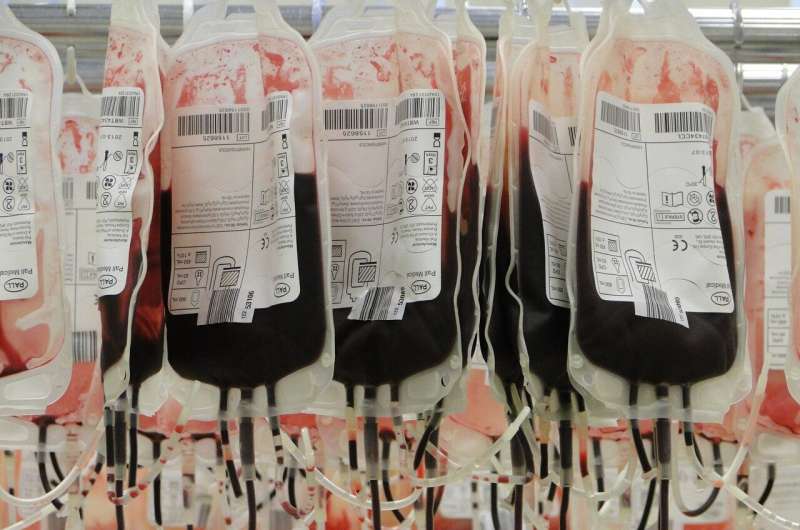August 30, 2024 report
This article has been reviewed according to Science X's editorial process and policies. Editors have highlighted the following attributes while ensuring the content's credibility:
fact-checked
peer-reviewed publication
trusted source
proofread
Silicon exoskeletons for blood cells: Engineered blood cells successfully transfused between species

A study by an international research collaborative reports a stunning blood modification method that not only protects red blood cells for perfusion-based transplant organ cryostorage, but could make blood types cross-compatible and eventually enable blood transfusions between species. The breakthrough is reported in the Proceedings of the National Academy of Sciences, and if the study's claims are borne out, this development could make a resounding impact in the clinic.
In January 2024, the American Red Cross declared an emergency blood shortage, reporting the lowest number of blood donations in 20 years. Estimating a 40% drop in donors over two decades, the Red Cross noted several contributing factors, including COVID-19, which inhibited workplace-based blood drives, as well as changes to hospital transfusion protocols. The growing need to expand the blood supply is now driving technological approaches, including advances in blood preservation and storage.
The researchers of the new study report a method for biocompatible blood silicification, which they call shielding-augmenting RBC-in-nanoscale amorphous silica, or SARNAS for short. The technique is a surface engineering and structure augmentation for red blood cells that essentially endows them with nanoscale silica-based exoskeletons. They conducted a number of in vivo studies and reported excellent biocompatibility, as well as 100% cryoprotection in storage settings.
But the kicker is that SARNAS shields the surface antigens on red blood cells—the proteins, glycolipids and carbohydrates that distinguish blood types. This means that Si-RBCs escape immune detection and could serve as a universal blood that could be transfused between people with different blood types, and even between species. The authors write, "The method presented offers a straightforward, efficient, and cost-effective approach to developing universal blood."
The authors sought to address a specific medical application: the perfusion of donor organs for cryopreservation prior to transplant surgery. Machine perfusion, the artificial perfusion technique used for this purpose, entails pumping an oxygenated solution through donor organs to mimic natural blood flow. Perfusion also controls the temperature of the organ to preserve it before transplantation.
The use of artificial perfusion solutions is widespread, but the best perfusion fluid is, of course, actual blood. Unfortunately, there are drawbacks to using blood to preserve organs, including the short shelf-life of RBCs and consequent wastage, blood type incompatibility, and mechanical damage to the cells during perfusion.
In tests, the Si-RBCs provided universal blood compatibility, functioned exactly like normal RBCs in mechanical perfusion tests, including mechanical deformability of the cells and oxygen transport, and maintained their membrane and structural integrity.
Xenotransfusion
To confirm the safety of the Si-RBCs between cross-species blood transfusions, the researchers performed two tests with mice. One group received a transfusion of normal human RBCs, while the test group received the Si-RBCs. The volume transfused was 4% of total blood volume, fulfilling the medical definition of a blood transfusion. Compared with the human RBC group, the Si-RBC mice showed negligible measures of damage to key organs, including kidneys and liver.
In the second test, both sets of mice received transfusions of 20% total blood volume. The authors write, "Both the Si-RBCs group and control group showed normal physiological behavior and good biosafety when transfusion volume was 20%, while the native RBCs group showed signs of liver damage and inflammation… All these results reaffirm that the Si-RBCs not only escape immune activation in different species, but also function perfectly for oxygen transport."
They conclude that the technique of creating an exoskeleton around red blood cells is an innovative experimental basis for interspecies blood transfusion, and that it could potentially alleviate shortages in the blood supply in the future.
More information: Chuanyi Lei et al, Improving normothermic machine perfusion and blood transfusion through biocompatible blood silicification, Proceedings of the National Academy of Sciences (2024). DOI: 10.1073/pnas.2322418121
© 2024 Science X Network



















